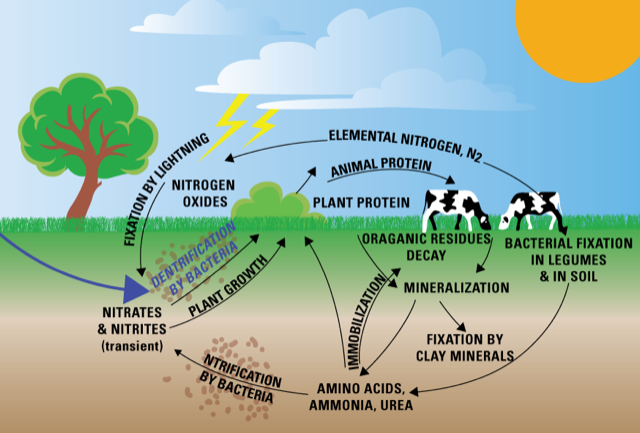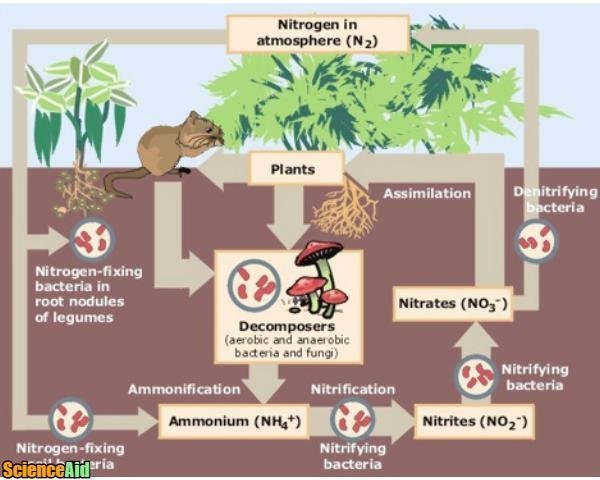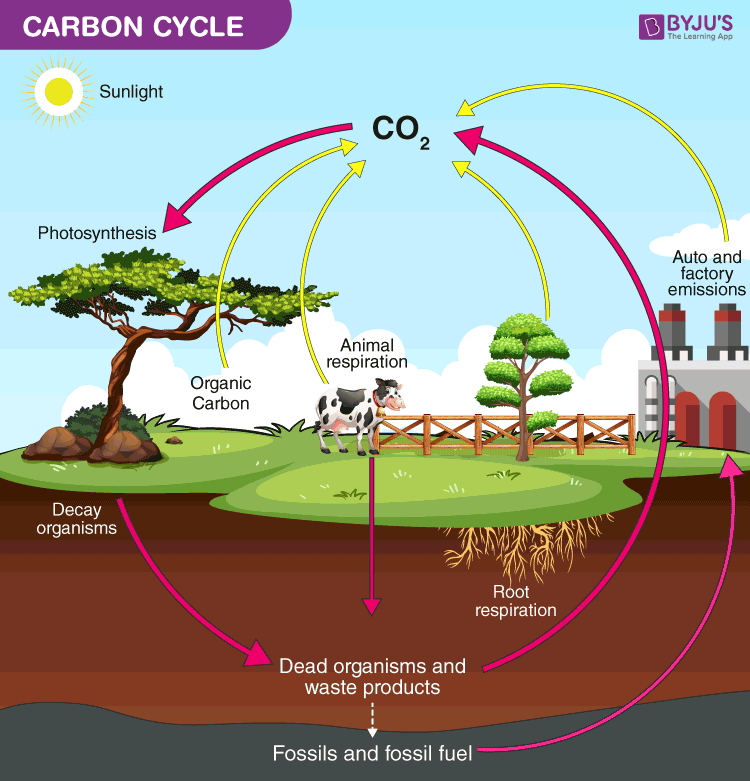Describe the Process of Recycling Nutrients
The recycling of various nutrients takes place in the form of nutrient cycles. I can think of two major important aspects of nutrient recycling.

How Can We Restore Earth S Nutrient Cycles Greenpeace International
Sorption includes a nutrient adhering to a solid adsorption or diffusing into another liquid or solid absorption.

. Recycling is the process of making used or unwanted products into new remanufactured products. Cover crops and manure can be used to feed soil microbes and recycle soil nutrients. The nutrient cycle can get out of balance and needs to be balanced and stable for organisms in the environment to flourish.
Qi A Describe The Process Of Recycling Nutrients 4 PTS TT TT Paragraph - Arial 3 12pt. In other words recycling is the art of making waste into a resource. Qi A Describe The Process Of Recycling Nutrients 4 PTS TT TT Paragraph - Arial 3 12pt E- E - T- DOQO TI T Toas Q R - - - O Fx.
A nutrient cycle or ecological recycling is the movement and exchange of inorganic and organic matter back into the production of matter. These are essential to the overall soil fertility. Protozoa and nematodes consume the nitrogen rich bacteria and help the nutrient recycling process.
Unfortunately urban expansion has thrown many of these cycles far out of balance. The recycling process varies depending on what item is being recycled. The nutrient cycle is a system where energy and matter are transferred between living organisms and non-living parts of the environment.
The minerals and nutrients in the soil is recycled back into the production of crops. It compared seven types of disposal recycling landfill incineration and so on for seven different types of material commonly recycled paper glass plastics and so on. Recycling includes the three steps below which create a continuous loop represented by the familiar recycling symbol.
The nutrients may be sedimentary and originate from soil or rocks or gaseous and originate from air or water. In forest environments there is an exchange. Apr 01 2022 0338 PM.
Nutrient cycles are a basic part of nature. In 2010 the UK governments waste and packaging advisory agency Wrap carried out a detailed analysis of the effectiveness of recycling. The process of recycling nutrients is called biogeochemical cycling which is when nutrients are used and accumulate into dead matter and then they are decomposers like insect bacteria fungi protozoans that break down complex organic materials into low energy- mineral nutrients that once again may be reabsorbed and used by plants.
The nutrient cycle focuses primarily on two nutrients carbon and nitrogen. This material is passed on down the food chains and is reused by all the chain members. Bacteria and fungi decompose the remains and release the nutrients back into the abiotic environment ie.
Energy flow is a unidirectional and noncyclic pathway whereas the movement of mineral nutrients is cyclic. Cover crops prevent the nutrients from being lost through soil erosion leaching volatilization or denitrification. Nutrient Recycling 23 These nutrients are then taken up by other plants and used to make new organic material.
Into the soil nearby water and air. A nutrient cycle is a cyclic movement of nutrients from its major reservoir through different organisms back into the same reservoir. Nutrient cycles Within an ecosystem nutrients begin as simple inorganic compounds carbon dioxide and nitrate ions that are taken in by a plant and used to make more complex biological.
The nutrient cycle describes how nutrients move from the physical environment into living organisms and subsequently are recycled back to the physical environment. The main physical processes of nutrient removal are particle settling sedimentation volatilization releasing as a gas into the atmosphere and sorption. Improved vegetative cover land configuration management and alley farming will form the base for sustained production achieving better soil and moisture conservation and improved nutrient recycling.
What is Nutrient Recycling. Ammonia and soil nitrates are converted back and forth in the soil. They release the nitrogen as ammonia.
These cycles indicate the flow of nutrients in an ecosystem. This is the same process that takes place in nature when decomposers such as fungi and bacteria break down leaf litter or dead branches on a forest floor. Nutrient runoff and leaching can impact water bodies and soil quality around our communities.
This movement of nutrients essential for life from the environment into plants and animals and back again is a vital function of the ecology of any region. There are other aspects of the nutrient cycle including sunlight trace minerals and rainfall. Through the process the carbon in the carbon dioxide once locked up in the organic matter as sugars or more complex molecules is made available to plants for photosynthesis.
As soil microbes decompose organic residues they slowly release nutrients back into the soil for the winter cover crops or for the preceding crop. Combining the production of biogas and fortified recycled nutrients is one of the key technologies for a sustainable nutrient economy. The paper is taken to a recycling plant where it is separated into different types and grades.
Plants require 13 essential nutrient elements 6 major 7 micronutrients and can profit from some beneficial nutrients. The process of recycling nutrients from the inorganic to organic and back to a living system is known as biogeochemical cycling. Collection and Processing There are several methods for collecting recyclables including curbside collection drop-off centers and deposit or refund programs.
Read more about Nutrient Loss Components. The first is that just like household recycling it reduces the amount of raw materials. This occurs as animals and plants consume nutrients found in the soil and these nutrients are then released back into the environment via death and decomposition.
Nutrients constantly move from the environment to living organisms and back.

Nutrient Cycle Definition Examples And Importance

Nutrient Cycles Recycling In Ecosystems The Carbon And Nitrogen Cycles Scienceaid

0 Response to "Describe the Process of Recycling Nutrients"
Post a Comment